The Cape Cod Modern House Trust purchased the architect’s decaying 1949 house and restored it to its former glory.
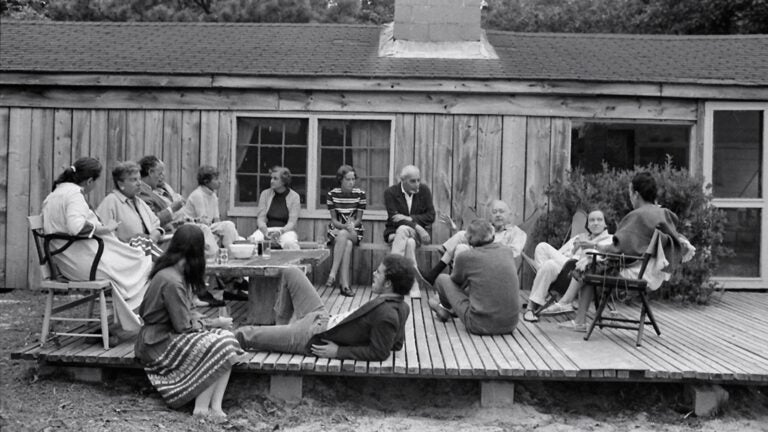
Marcel Breuer, his wife Constance, and other artists and scholars gather at Breuer’s Wellfleet house in the late 1960s. Tamas Breuer
For decades, the Wellfleet home of Hungarian-born modernist architect and furniture designer Marcel Breuer (1901-1981) sat empty, its contents and structure falling into disrepair. Peter McMahon, an architect and founding director of the Cape Cod Modern House Trust (CCMHT), found it almost painful to sit idly while a piece of modernist history decayed — and then Breuer’s son, Tamas, decided to sell the place.
McMahon seized his chance to restore the renowned Bauhaus designer’s 1949 house to its former glory. He approached Tamas Breuer with a deal: Would he wait one year to put the house on the market so the trust could raise enough money to buy it? Tamas Breuer, who planned to list the property for $2 million, agreed. Within a year, the trust fund-raised the necessary $2 million to acquire the home in 2024, and then borrowed an additional $700,000 to renovate it.
 The deck at Marcel Breuer’s former Wellfleet home after the restoration. – Peter McMahon
The deck at Marcel Breuer’s former Wellfleet home after the restoration. – Peter McMahon
The CCMHT was founded in 2007 with the goal of restoring the Outer Cape’s impressive modern homes. In the 1940s, artists, designers, academics, architects, and other avant-garde thinkers began flocking to Wellfleet, building or hiring architects to create cottages to spend the summer.
Those sleek homes are now valuable pieces of the Cape’s modernist design history. McMahon has leased four mid-century houses from the National Park Service (The Kugel/Gips House, The Hatch House, The Weidlinger House, and The Kohlberg House) since they sit on the National Park Service’s Cape Cod National Seashore land. Though the organization carefully renovated — and maintains — the buildings, the trust had never outright owned any of its homes until this recent purchase.
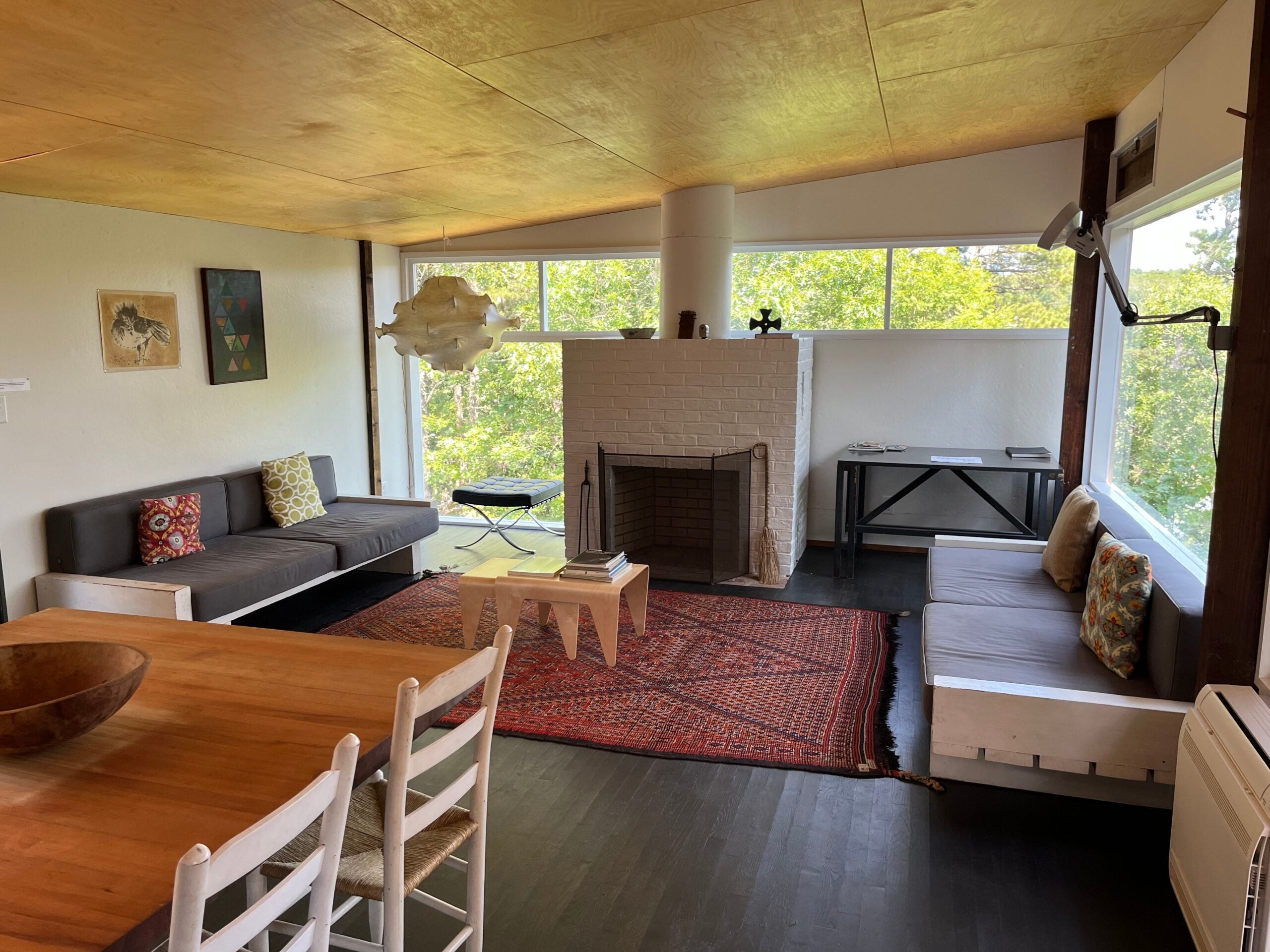 The living room in Marcel Breuer’s former Wellfleet home after the restoration. – Peter McMahon
The living room in Marcel Breuer’s former Wellfleet home after the restoration. – Peter McMahon
Breuer was a member of The Harvard Five, a group of Bauhaus architects who started a contemporary movement in New Canaan, Conn. Philip Johnson, John Johansen, Landis Gores, and Eliot Noyes were also in the group.
Breuer’s Wellfleet house — which sits across from architect Serge Chermayeff’s 1954 summer cottage — is considered one of the designer’s two main prototypes: a Long House. Breuer House I, designed for his family in New Canaan, is also a Long House as it’s a “long wooden box elevated on a masonry base,” explained McMahon. The other prototype is the Binuclear — a house on the ground with two wings.
 Marcel Breuer, architect for the Whitney Museum of Art in New York, in 1966. – AP Photo/John Lindsay
Marcel Breuer, architect for the Whitney Museum of Art in New York, in 1966. – AP Photo/John Lindsay
The Wellfleet house resembles an elevated wooden cabin and was inspired by New England-style cottages and oyster houses. The structure is surrounded by a little over 4 unspoiled acres and offers frontage on three ponds.
“It’s way back in the woods, but it was kind of the epicenter of the modernist experimenters,” McMahon explained. Breuer spent every summer at the home until he died in 1981, and his ashes are buried in front of it.
When the trust acquired the home, it hadn’t been maintained for roughly 30 years. “It was really in a state of extreme dilapidation and parts of it were uninsulated,” said McMahon.
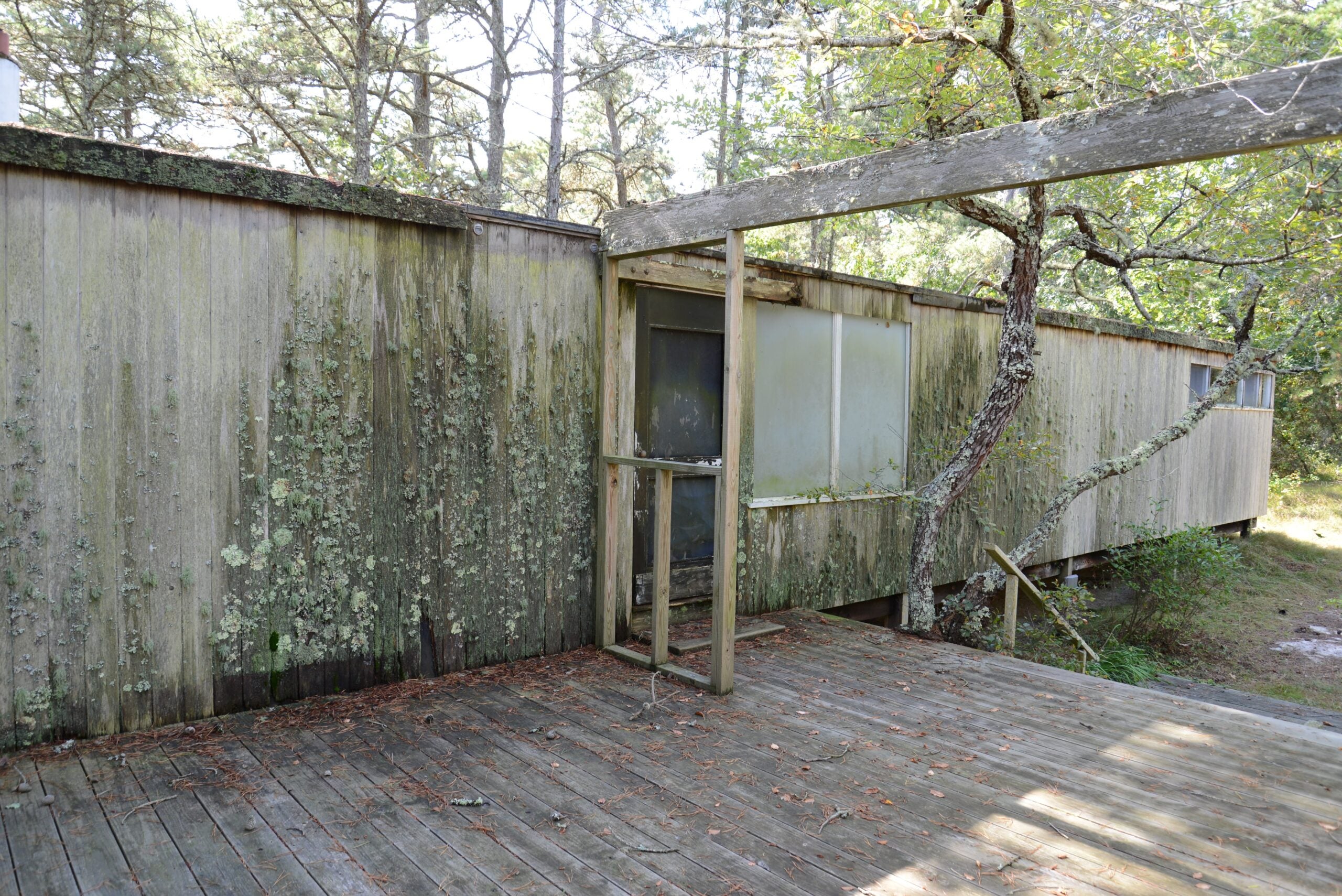 The Wellfleet home of modernist architect and furniture designer Marcel Breuer had fallen into disrepair. – Peter McMahon
The Wellfleet home of modernist architect and furniture designer Marcel Breuer had fallen into disrepair. – Peter McMahon
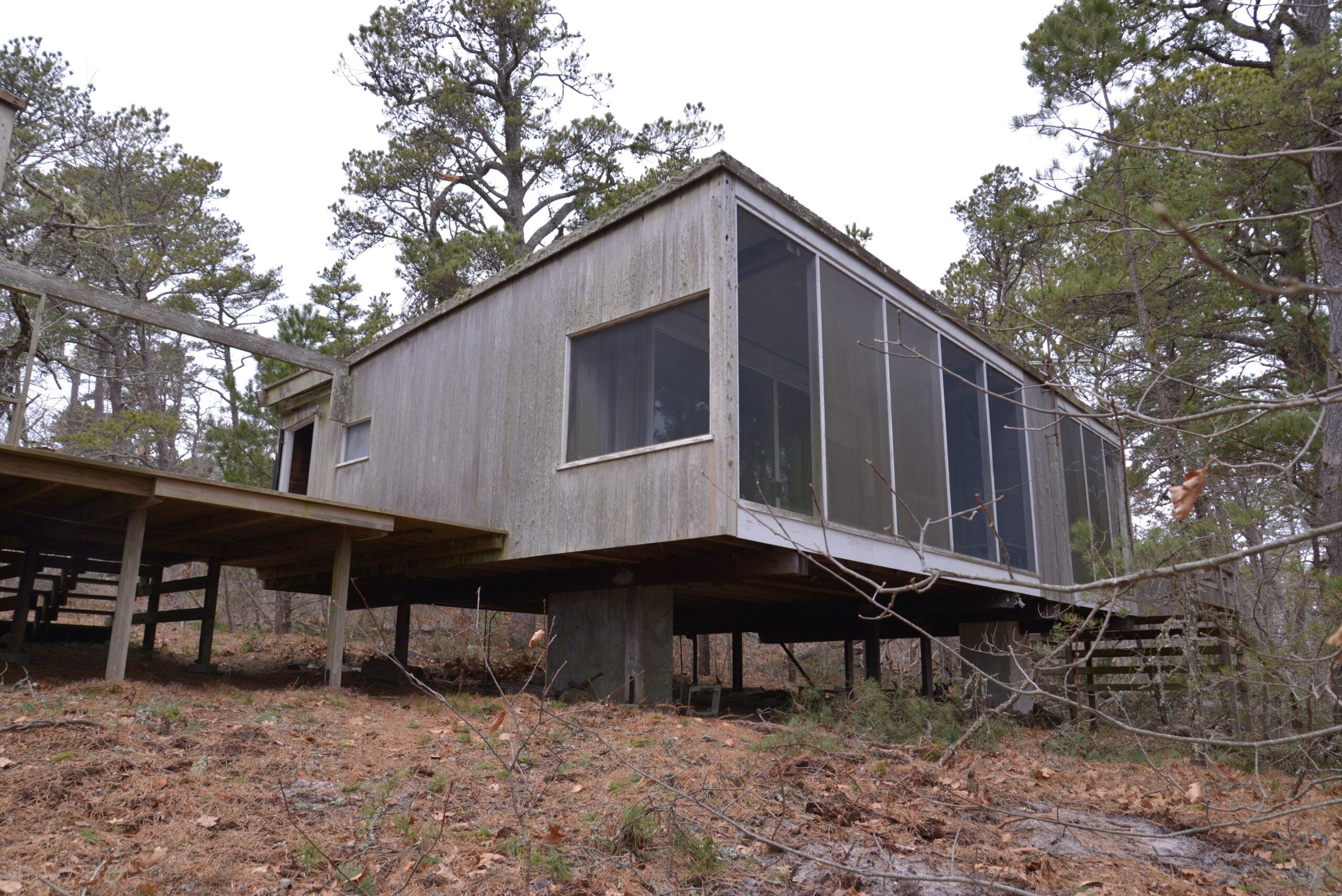 – Peter McMahon
– Peter McMahon
The team had to bring the house up to present-day building code by adding smoke alarms, building railings where there was previously an open platform with a 7-foot drop, inserting steel reinforcements into parts of the floor near the sagging porch, and adding all-new siding, windows, plumbing, and electrical systems.
As part of the historically accurate renovations, the walls, made of a recycled paper and wax material called Homasote, were freshly painted white, and the floors were restained black, revealing an influence of Japanese design. Other materials were sourced to be as close to the original as possible. Some of the bathroom walls, for example, were covered in a light grey sheet laminate called Marlite, and the team discovered it’s still being manufactured in exactly the same color.
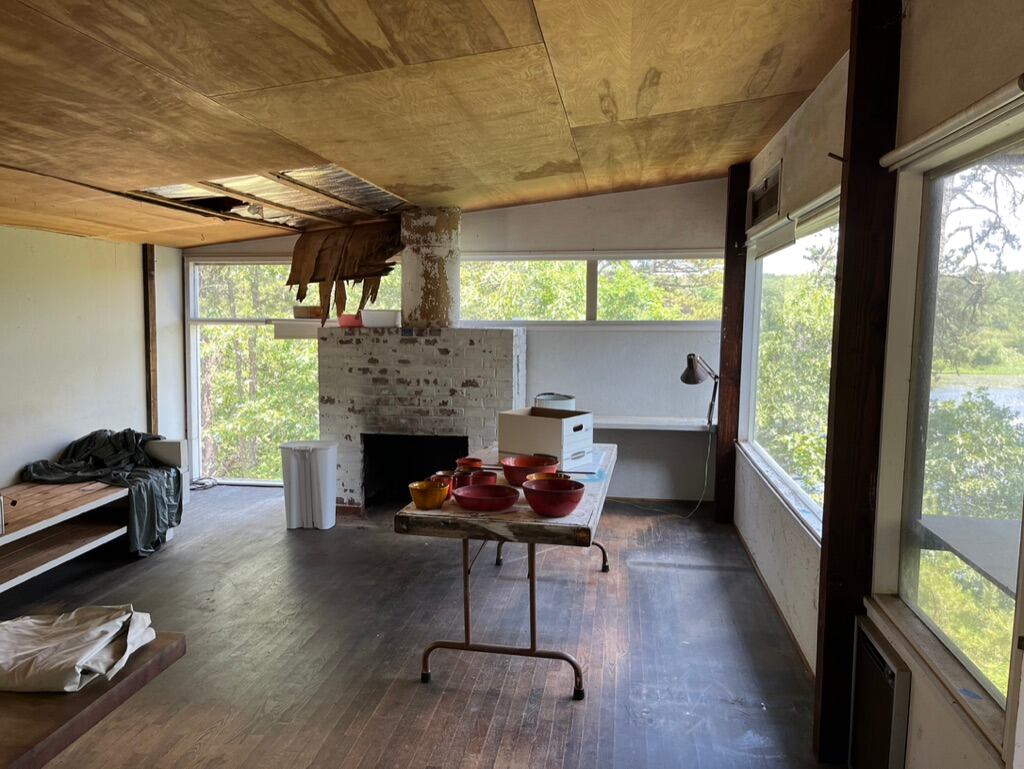 A hole in the ceiling was one of many repairs. – Peter McMahon
A hole in the ceiling was one of many repairs. – Peter McMahon
McMahon pointed out that each section of the house is elevated off the ground, and its roof slopes upward. “You have this feeling that you’re floating,” McMahon said. “It’s right on the edge of this drop, so you get this amazing feeling that you’re projected out over the treetops and over the pond. The moves are very simple and amazingly effective.”
The purchase of the Long House came with many of its contents, including homemade Brutalist furniture Breuer designed for the house, a vast photo collection by Tamas Breuer, and an art collection with works by Paul Klee, Joseph Albers, and other artists whom Breuer had befriended from art schools such as the Bauhaus and Black Mountain College. During negotiations, McMahon also secured an Alexander Calder painting and a self-portrait Breuer did when he was 17 that had never been seen by scholars.
 The porch renovation included building railings where there was previously an open platform with a 7-foot drop. – Peter McMahon
The porch renovation included building railings where there was previously an open platform with a 7-foot drop. – Peter McMahon
 Marcel Breuer’s former Wellfleet home after the restoration. – Peter McMahon
Marcel Breuer’s former Wellfleet home after the restoration. – Peter McMahon
The only problem: most of the art was stuck to the wall with thumbtacks. “There were mold issues and there were silverfish, which had eaten some of the paper,” McMahon said. Like the rest of the house, its contents required careful conservation and restoration.
By summer 2025, renovations wrapped up on the home, and it debuted to the public at an open house in September. Like the other homes managed by the CCMHT, it’s available to rent during summer months, and hosts artists in residence outside of peak season. Tours of the cottages are also offered several times per year. It’s all part of McMahon’s vision to allow the homes to be experienced, rather than turning them into museums.
Today, the Breuer house appears almost as it did in the 1950s and ‘60s, with spare furnishings, floor-to-ceiling windows, original art and reproductions, and period light fixtures.
 Before: The bedroom in Marcel Breuer’s Wellfleet home pre-restoration. – Peter McMahon
Before: The bedroom in Marcel Breuer’s Wellfleet home pre-restoration. – Peter McMahon
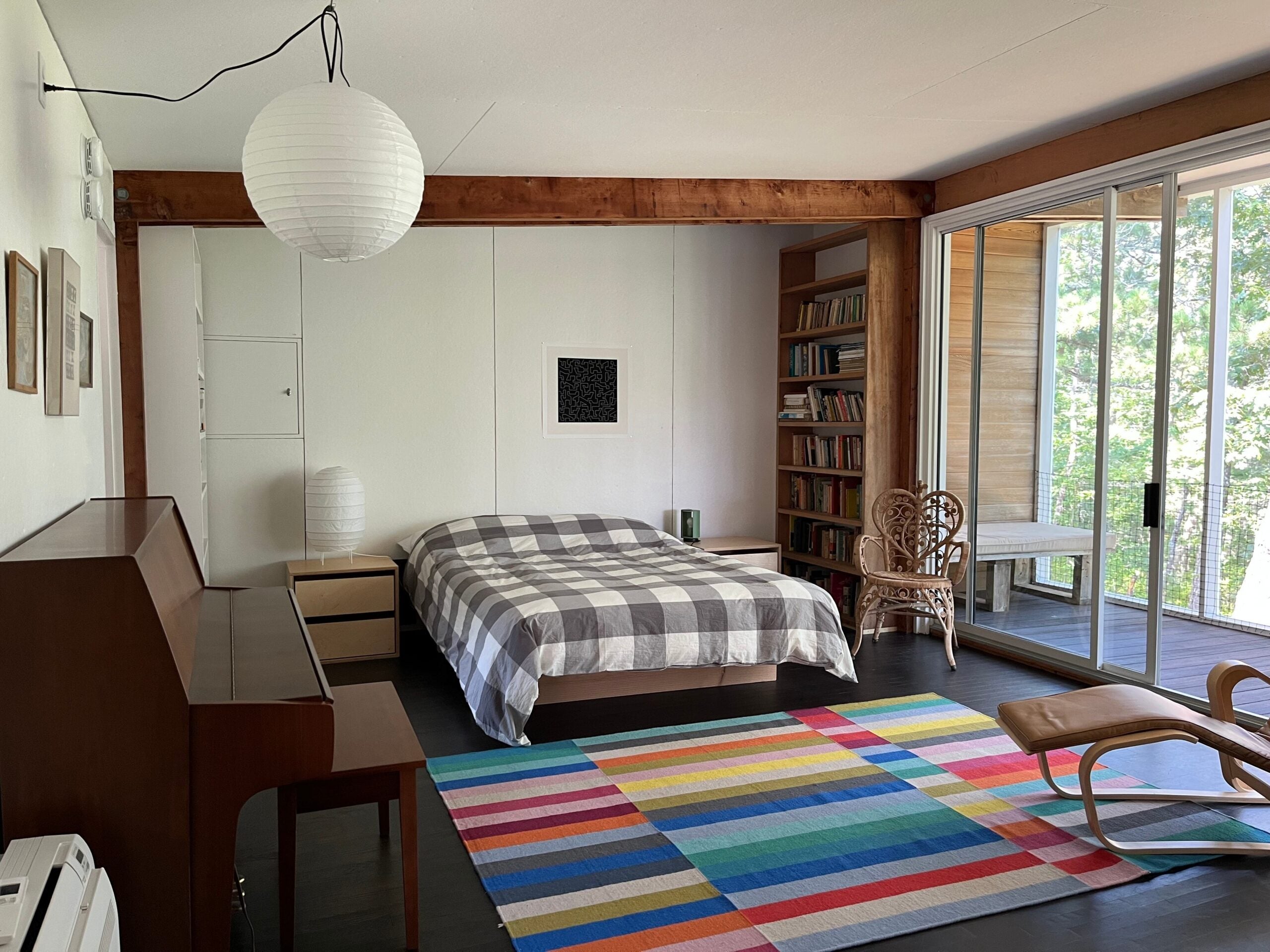 After: The bedroom in Marcel Breuer’s former Wellfleet home post-restoration. – Peter McMahon
After: The bedroom in Marcel Breuer’s former Wellfleet home post-restoration. – Peter McMahon
“I’ve always liked Breuer, but I have a whole new level of respect for him after restoring his house, because the house was in such bad shape and so full of junk that you really couldn’t tell what it was. You couldn’t perceive the spaces,” McMahon said.
“But when it’s all back the way it’s supposed to be and the spaces are legible, you see there’s this incredible genius of how he took these very simple shapes and organized them along this ridge — over a pond, over a very steep drop, to maximal effect.”
